Moral and Legal considerations for operating a Security Camera system in a communal garden.
Garden Squares are unique environments. The need for high-security CCTV is lower than in other commercial/residential environments, whilst the cost of cabling/networking is far higher. Here are our tips on picking a Garden-Square-Friendly Camera system.
Power Over Ethernet (POE) Cameras
The go-to for Security professionals up and down the country, Power Over Ethernet (POE) cameras supply power-to, and retrieve footage from data cables containing 5+ strands / cores, that are connected into a central Network Video Recorder (NVR) box. These cameras are typically marketed as more secure (no wireless signal to jam, footage stored centrally), and a cost effective way to record 24/7, and retain footage for longer.
However for most Garden Square’s they are unsuitable. Firstly the cabling required is expensive. Armoured Network (required for outdoor environments) is thick, and costs at least £2/m to purchase, to say nothing of cost of running wires underground across a garden, around Root Protection Areas, etc. The cores inside the cable are thin and at constant risk of damage, and supplying power and data over large distances can be problematic. There are workarounds, such as relay stations with point-to-point wireless networks, but it just adds to the bulk and visual-distraction of these cameras and their infrastructure.
The bulk of the cameras and their required cables also often makes them unsuitable for flexible mounting, such as our Tree-Strap mounts.
Many of the POE Camera providers offer fairly poor central server connectivity, making remote connection to the onsite NVR slow/cumbersome. Most Garden Committees want a short clip of someone coming / going from the Garden, and POE systems frequently make that unnecessary difficult retrieve.
Finally, as we cover in our Data Protection Article, it is possible to invade resident privacy by recording too much, and retaining the footage for too long.
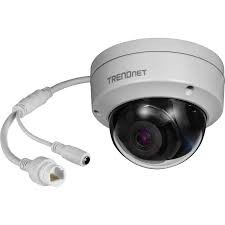
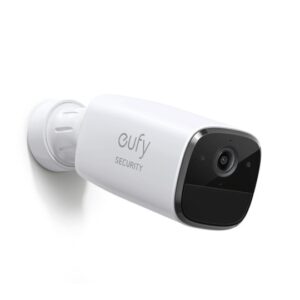
WiFi On-Motion Battery Cameras
Over the last 5-10 years there have been significant improvements in the availability of Cameras that are powered by a battery, connect directly to a WiFi Network, and record footage on-motion.
These cameras liberate Gardens from wiring / cabling, though we typically suggest Gardens run a trailing charging cable to a waterproof box. That way when they want to recharge the camera, they simply need to connect a pre-charged power bank to the wire in the waterproof box, rather than getting a ladder to take down the camera, etc).
By only capturing footage on motion-detection, these cameras tend to offer multiple weeks of battery life even in relatively high-traffic environments.
Many motion-detection cameras boast “AI” filtering, i.e. only recording events involving Humans / Animals / Cars, etc – however this filtering does little to preserve the battery life, which is mainly governed by how frequently the low-tech passive-infra-red sensor onboard the camera detects (any kind of) motion.
Such cameras do require the Garden to have a dedicated network. We typically achieve this by installing a 4/5G router in a convenient location with power, such as a Garden Shed, from that router we wire an External Access Point (EAP) that can broadcast a Wifi Signal up to 150m away. Where further distances need to be covered, we simply install further EAPs to extend the WiFi network.
The Cameras typically come with onboard storage of 4-12GB, which depending on recording settings, will typically retain 2-8 weeks of footage. We advise selecting settings that will lead to footage retention no longer than1 month.
The principal downside of these cameras is that if they are stolen and removed from the network, the footage (if not backed-up to the cloud) is lost.
WiFi 24/7 Recording Cameras
Operating in a similar way to on-motion WiFi Cameras, some models do offer24/7 recording, storing the footage onto an internal SD card. They do need tobe permanently powered, meaning they can only be installed within 30-40feet of a power socket. This requirement also makes them more vulnerable tovandalism (if someone cuts / yanks-out the wire, the cameras go-offline).
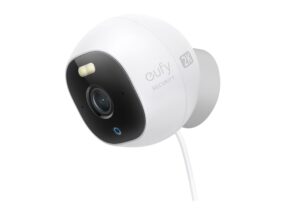

Wireless Cameras Connecting to a Central Hub
A decent solution to protecting the footage from Wireless Cameras is to use a system that relies on a central hub. These products work by the Cameras connecting directly (wirelessly) to a dedicated Hub (an NVR box).
Such Hubs can then be placed in a relative secure place, such as a locked box within a shed, protecting the footage should an individual camera be stolen.
These Hub systems frequently offer additional features, such as the ability to trigger an action on one camera, based on detecting motion on another.
- A practical example of this would be alarming a Garden shed at night, using a Hub, a manager can set an automation that when motion is detected by a Camera within the shed, an alarm sounds both on that camera, but also other cameras connected to the same Hub.
One growing danger of these Hubs is that they increasingly offer expandable storage (up to 3TB) without providing auto-expiry limits for footage. The result is that a Garden Committee could store footage for far longer than anticipated or required, compromising resident privacy. As a result we recommend either avoiding expanding storage on these units, or doing so sparingly, so no more than a month’s worth of capacity is provisioned.
A final downside of the cameras is limited range. Whilst we have connectedwireless cameras 80+ meters away from Hubs in Garden Sheds, their range istypically more limited than standalone cameras connecting to a WiFI networkbroadcast from an external access point.
4G Cameras
4G Cameras can be placed anywhere in a Garden, even if there is no power supply or WiFi network. These Cameras boast their own network connection via a 4G Sim Card, and are typically offered with 4-12GB of onboard storage.
Many of these cameras are sold with standalone solar panels, with the intention of making the camera entirely self-sufficient.
We have tested such solar panels in London Garden Squares, and found that the shade from the surrounding tree canopy and buildings frequently prevents a 5/6W solar panel from providing adequate charge in anywhere buta low-traffic/motion environment. For this reason we typically advocate the method of connecting trailing wires into a waterproof box where a powerbank can be routinely connected).
The one downside of these cameras is that individual sim cards carry a greater on
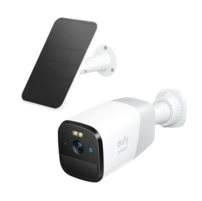
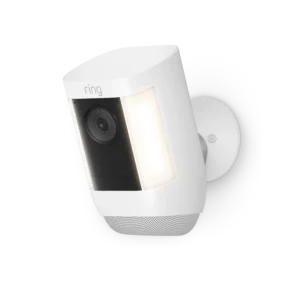
Cloud Cameras
Some Wireless Cameras are designed to connect to a cloud subscription account where the footage is stored. The benefit of this model is that the footage is secure once uploaded, typically comes with an automatic expiry (1week or 1 month), and is quickly accessible by the end-user/administrator.
The downside of these cameras is the subscription is typically expensive, andby uploading every bit of footage to the cloud-server, multiple cameras can quickly overrun the upload bandwidth of a 4G/5G router like we recommend(typical upload speed of 10mb/s). The cameras also typically don’t record footage if the internet connection (either WiFI, or network connection) fail, making them less reliable.
Cameras with Built-In Solar Panels
An unsurprisingly successful marketing gimmick, many camera manufacturers have started adding solar panels to the top of Wireless Cameras. The supposed-logic and draw of this is that it does away with a separate solar-panel, combining it in the camera in one neat package. Unfortunately such cameras are subject to countless complaints online and are often quickly withdrawn due to 2 core problems with the concept:
- the solar panel is not large enough
to charge the camera, even in sunnier, low-motion environments that your average Garden Square. A typical5/6 Watt solar panel is 2-3 times larger than these inbuilt solar panels, and still struggles to keep a camera charged. - it combines something that likes it hot (solar panel) with something that dislikes heat (cameras)
– WiFi cameras are essentially small computers and small computers slow with heat. Adding a dark solar panel to the top of a camera is therefore not sensible. - the ideal sun location/angle is rarely the ideal camera location/angle
– assuming you prioritise the camera angle for best footage, this will mean not only is the solar panel too small to begin with, it will also be angled sub-optimally to catch the sun.
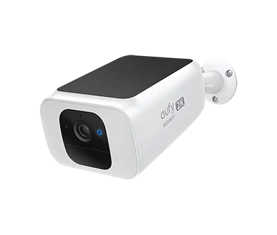
Motion Tracking Cameras
Another type of Camera to be weary of is 360 degree motion tracking (/Pan& Tilt) Cameras.
Once again the Technology sounds great, you invest in a single camera with one or more quality lenses, that will track nearby movements with greater focus / clarity. They also help placate some misguided local planning guidelines under certain authorities (such as Camden council’s ‘no more than1 camera every 10 meters’).
Unfortunately, in the UK (and Europe) such cameras will frequently beconsidered overly invasive, and fall foul of Data Privacy regulations. By theirnature, the cameras are designed to focus on individuals, rather than protecting or covering a specific area (the justification. They are are unable to set (or mask) the area the camera may capture, and therefore more likely to capture footage that uneccessarily compromises an individuals privacy.
Previous Story
Considerations for Camera Controllers
Next Story
Easy Access to the Internet
Related Posts
How we mount cameras in a smart, and regulatory-compliant way.




